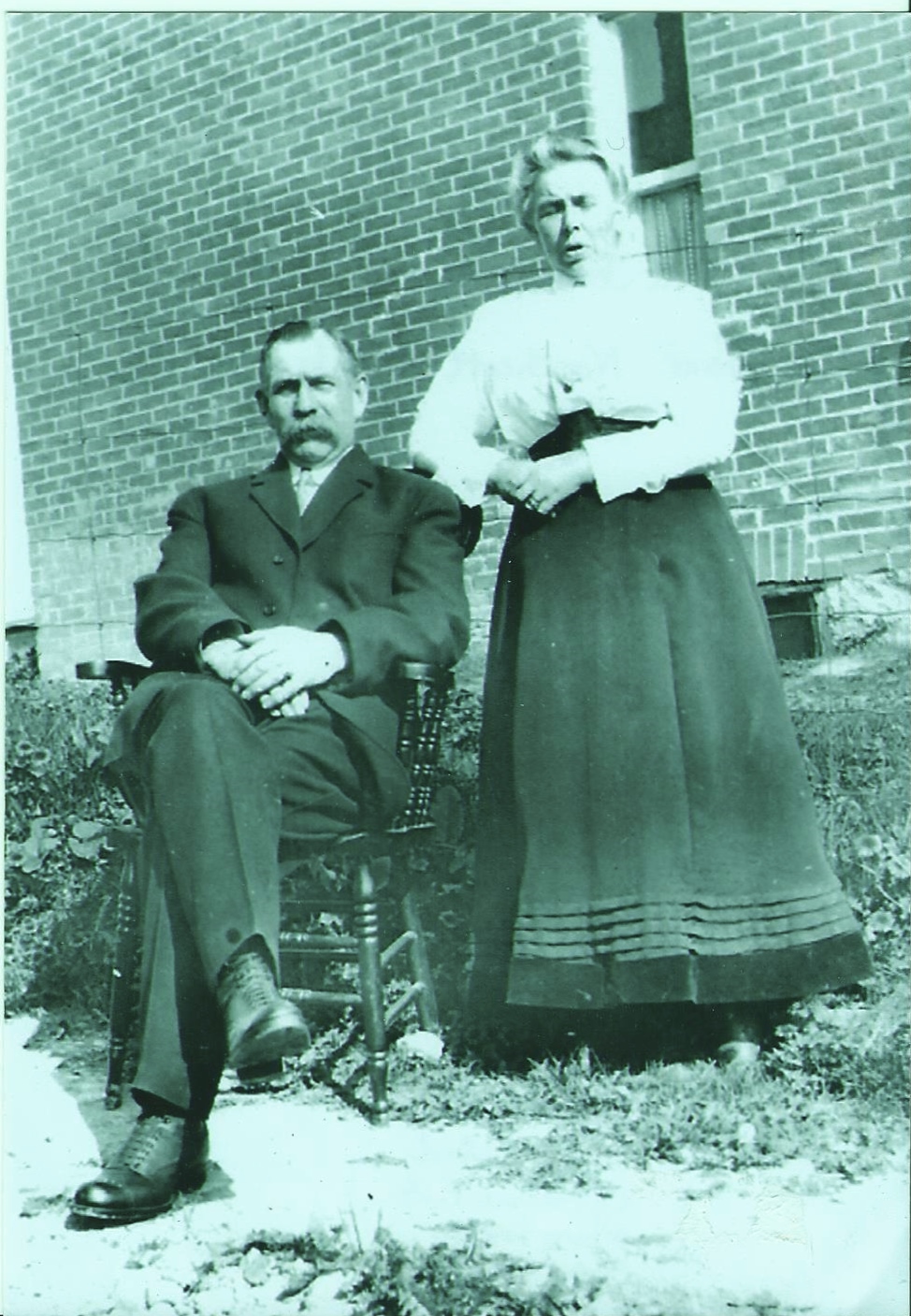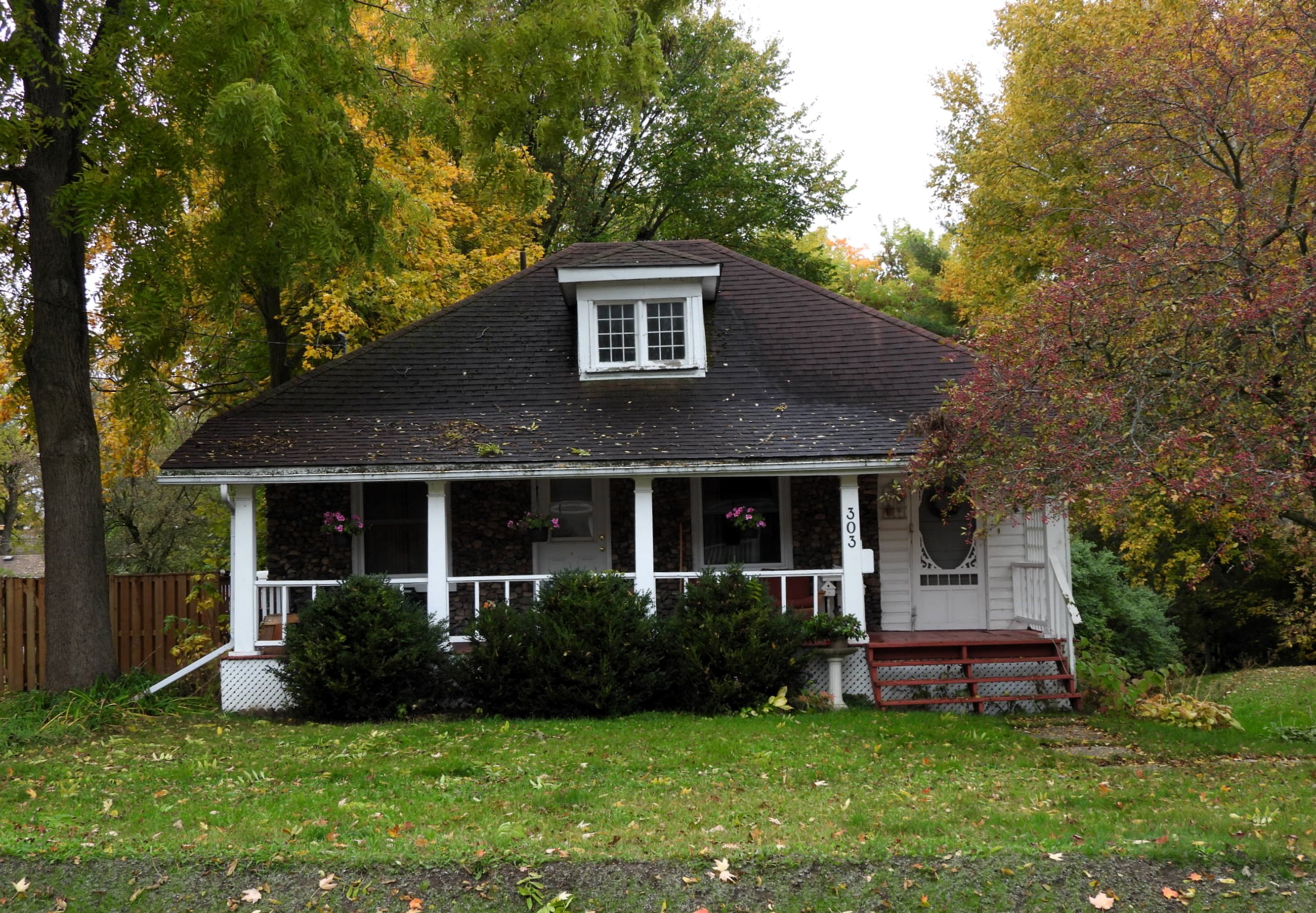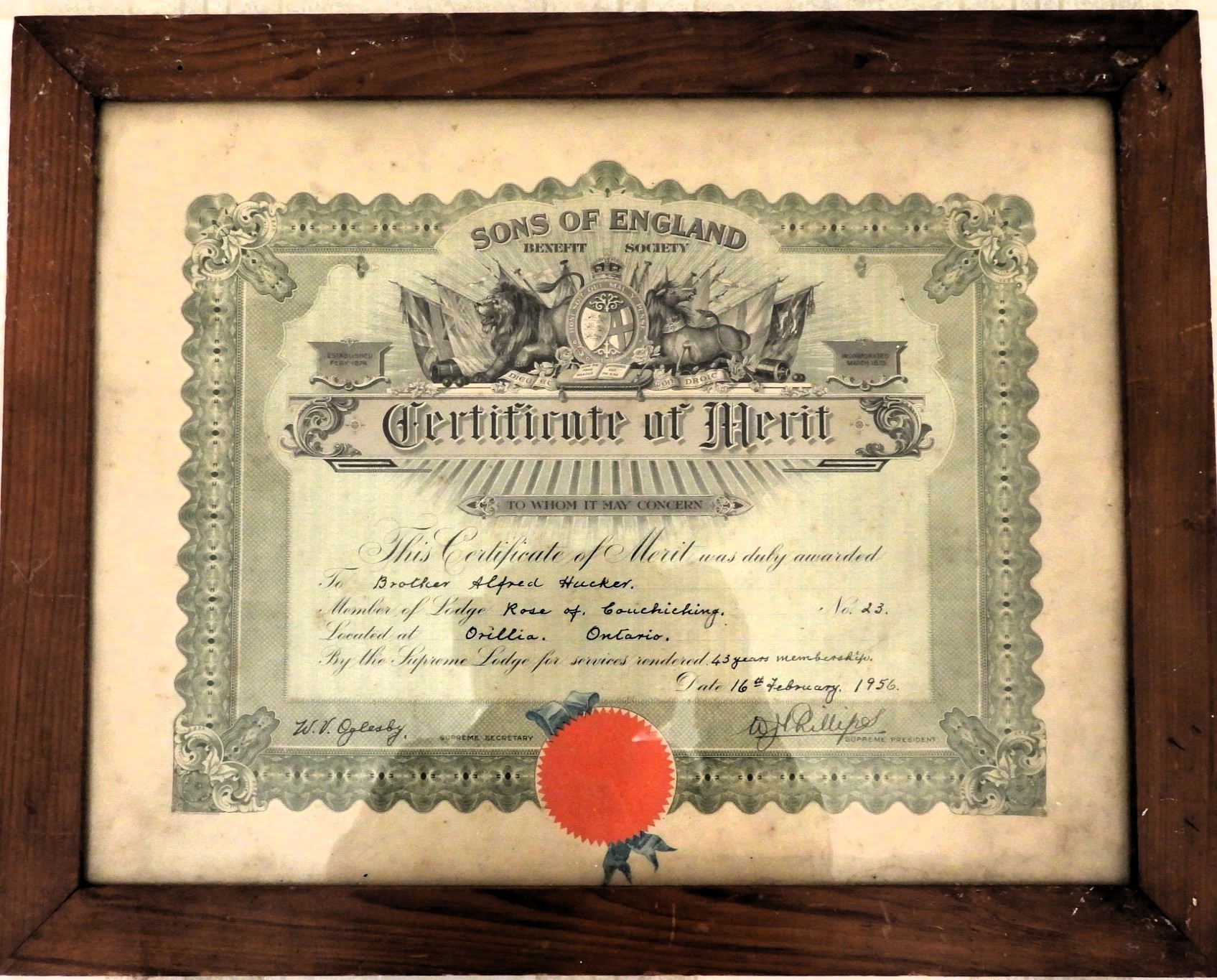By Janet Houston, OMAH History Committee

Alfred and Jane Hucker
What could tempt a middle-aged couple to emigrate from England to a distant part of the Empire in 1912? Fifty years of age is not now considered old as it was thought then. Nonetheless, this adventurous couple embarked on the White Star Line ship ‘Teutonic’ in April, 1912, just a few days after the Titanic went down. On the Teutonic, they sailed to Canada.
England was entering into a period of intensive industrialization around 1912 that would eclipse the first Industrial Revolution. Labour unrest was rife and violence was part of strikes. Perhaps it seemed that the underpinnings of English society were being torn apart to this couple who had lived in quieter times and had grown up in the countryside.
The emigrating couple, Alfred and Jane Hucker, had both grown up in rural agricultural communities in the west of England. They had lived and worked in London for part of their lives. Jane worked in the London home of a wealthy landowner from the area where she grew up, St. Giles-in-the-Heath, Devon. Alfred had served for a decade in the Coldstream Guard in Egypt, South Africa and finally at Buckingham Palace in London, before working outside the Guard.
It had always been Alfred’s dream to own enough land to have a farm. He had fond memories of his childhood on a small farm near Othery, Somerset.
Other members of Alfred and Jane’s family had emigrated to Canada, most importantly, two of their three sons, Frederick and Ernest. In their late teens or early twenties, the brothers had ended up in Orillia, where they were enthusiastic participants in sculling and swimming. One was employed as a machinist. We don’t know where Ernest worked while he lived in Orillia.
Before the original Orillia YMCA on Peter Street burned, Frederick and Ernest were pictured in a large photo hung at the ‘old Y’ with Jake Gaudaur, at a sculling event. Frederick married a young woman from the area, Viola Baskerville. They had a son in 1915, the first grandchild for Jane and Alfred.
When Alfred and Jane arrived at the Orillia rail station in 1912, they were collected by Frederick and Ernest.
Orillia in 1912 was a leader in modernity, having a new electric power system. The special gift of welcome given to Jane and Alfred by their sons was an electric lamp in the style of the time, with an Egyptian scene hand painted on the inside of the shade. The couple stayed with Frederick and Viola at their home at 55 Nottawasaga Street for a time.

Alfred and Jane’s Cobblestone Bungalow
In short order, Alfred bought property in the Moffatt Farm, and built a two-storey red brick home, like those we see in Orillia today. By 1920, they had built a cobblestone bungalow to eliminate the need for Jane to use stairs as she had begun to develop heart problems. The cobblestone bungalow was reminiscent of some she may have seen in Devon. Their brick home was either rented or sold to another English family when Alfred and Jane moved to the cobblestone bungalow.
Jane and Alfred planted trees on their properties, mainly Rowanberry (Mountain Ash), Chestnut, Oak and Apple. The fruit from these trees would benefit the sow and piglets being raised in a small barn at the back of their property.
They grew productive vegetable gardens, storing their root vegetables outside all winter in a straw lined pit. Alfred would go outside, clear away snow, then fetch cabbage, turnip, parsnips, Brussels Sprouts or carrots. Potatoes and onions were stored in the cellar under their home.
In the early 1900’s many homeowners kept chickens, and other livestock such as goats and swine. Soon after they built their first home, Alfred built a ‘Fowl House’ several lots’ distance away from their home. Locating domestic fowl away from the family home was a practice Alfred brought from England. Perhaps he had some insight into the fact that respiratory diseases could be communicated from fowl to humans. His Mother had been a ‘Fowl Keeper’ and had died very young of a fever, possibly contracted from chickens.
The Fowl House built by Alfred was the size of a double bunkie, with a pot-bellied wood-burning stove, windows, and a comfortable chair. The building had electricity. Alfred built individual cages elevated along the wall for the fowl. There, he raised rare breeds of chickens and roosters. He showed them at the Royal Winter Fair in Toronto and sold young hens and roosters to others.
When Alfred gave up keeping fowl, the Fowl House was sold to a family who converted it into a home. Since then, additions and improvements have been made to it and the original fowl house is still part of the overall structure.
The fact that the train station was within walking distance of Alfred and Jane’s new home was one of several reasons they chose property on Millard and Moffatt Streets. The location was also ideal to walk to the Narrows, where Alfred’s lapstrake rowboat, and 3 Horsepower Evinrude motor were kept at the Mansell Harris Boat Livery. His rowboat had been built in Orillia. Its hull was a little deeper than usual, to deal with the swells of Lake Simcoe, his favourite fishing spot. Alfred never learned to drive a car. He walked everywhere, into his very late 80’s.

Certificate of Merit Sons of England – Awarded to Brother Alfred Hucker
Around 1912, there were several immigrant families from England living on Millard, Moffatt, High and Gill Streets. It was an era of being proud to be part of the British Empire and of keeping up English customs. A Chapter of the organization “Sons of England” had been founded in Orillia, named “Rose of Couchiching”. It was a social organization whose purpose was to benefit to members. Useful skills were represented within the membership group of English immigrants in Orillia, for example, bricklayer, stone mason, joiner, stair maker, electrician, painter, plasterer, to name a few.
Members of Rose of Couchiching Chapter of Sons of England helped each other to build homes and shared knowledge about tasks required to maintain a home properly. Many of the homes built by these English immigrants stand to this day, including cobblestone homes. It is likely that many of the cobblestone homes in Orillia were built with the guidance and assistance of the same man in the early to mid-1900’s.
Ties to the mother country were strong. Alfred ‘sent to England’ for his boots, shoes and woolen clothing. Amazon has nothing on that era, except possibly speed of delivery. A family member told me that an Axminster carpet was sent for at one point.
I had wondered if Jane, being from a remote location in Devon, may not have had the opportunity to attend school. Public Education came into force in England in 1896. But recent events have turned up an autograph album in which Jane wrote a verse to a young Orillia girl having her 8th birthday in 1931. This autograph album was presented to the little girl, who became the mother of a dear friend of mine.
It is likely that Jane attended a Church of England school as a youngster. C of E schools were usually the only school available in small communities. Another possibility is that Jane benefitted from being included in lessons given by the governess of the local landed family. It is also possible that her mother taught her to read and write.
Jane’s name before marriage was Northcott (also spelled as Northcote). There is a village called Northcott near the town, St. Giles-in-the-Heath, where Alfred and Jane were married. Jane’s Mother’s birth name was Grace Curtis-Edwards.
Jane and Alfred had three sons and one daughter, Grace, who died in infancy. In addition to the two sons who preceded them to Canada, the eldest, John Alfred, with wife and son (born 1919), arrived in Orillia in 1920. Eldest son, John Alfred Jr. had served in the English Navy throughout World War 1 and since 1901, approximately. He survived his ship being blown up by submerged mines at Gallipoli because he was a strong swimmer, having learned to swim during his childhood at Bridgewater in Somerset.
The second son, Frederick, died in battle in France, just before the Armistice in November 1918, at about age 29. His name is inscribed on the Vimy Memorial. Frederick left a widow, Viola (nee Baskerville), and young son, John Alfred ‘Nelson’. Nelson joined the RCAF during the Second World War. He was seconded to RAF Bomber Command in England and flew many missions in a Lancaster Bomber as a gunner. Sadly, he was shot down in 1943, aged 28, in an air battle over Germany and is buried in Hanover Cemetery in Germany. Hucker Lake, in Northern Ontario, was named for John Alfred Nelson Hucker. Nelson left a very young daughter, Anna Margaret and his widow, upon his death October 9, 1943.
Jane and Alfred’s third son, Ernest, was not able to serve in World War 1, having suffered deafness from a childhood illness. Ernest moved to the Windsor area and participated in a family-run carpet import business. The business still exists but family knowledge about this branch is almost non-existent.
I am descended from Alfred and Jane Hucker through the second son of their eldest son. My Grandmother was expecting my Dad when they arrived here. He said he was ‘smuggled into the country’ from England.
The name Hucker is northern European in derivation. It is a relatively rare name in Canada, with perhaps only 65 occurrences at time of writing. The name is most populous in Somerset County in England, where it has been recorded as a surname since the 1600’s.
